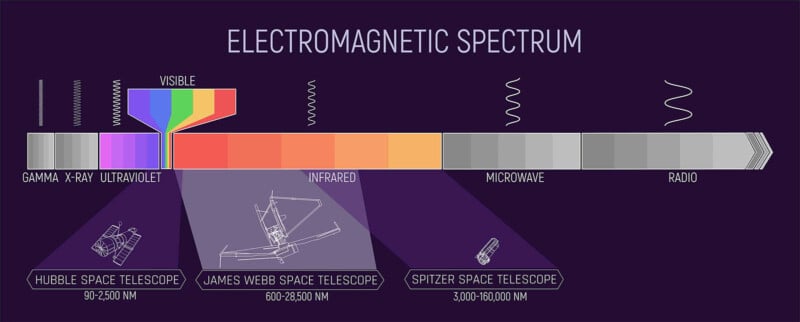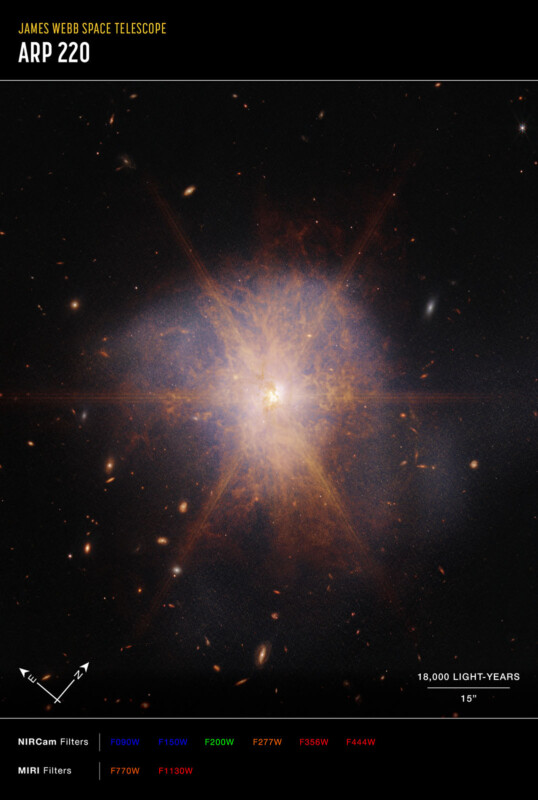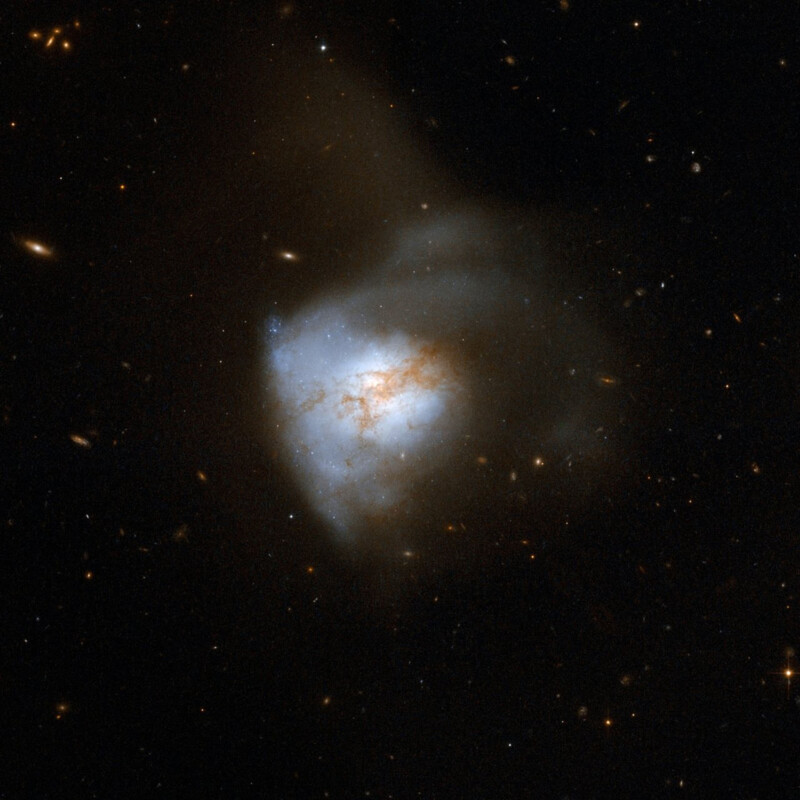Webb Captures Star-Forming Galactic Merger Brighter Than 1 Trillion Suns
![]()
NASA’s James Webb Space Telescope has captured a stunning “smash-up” of two spiral galaxies. Collectively called Arp 220, the collision of the pair of galaxies has facilitated massive star formation.
Arp 220 is best viewed in infrared light, one of Webb’s specialties. Using its Near-Infrared Camera (NIRCam) and Mid-Infrared Instrument (MIRI), Webb captured Arp 220 in stunning detail.

Arp 220 is located within the constellation Serpens, about 250 million light-years from Earth. Arp 220 gets its namesake because it is the 220th object in Hallton Art’s Atlas of Peculiar Galaxies. Arp 220 is “peculiar” because it’s an ultra-luminous infrared galaxy (ULIRG), and the nearest ULIRG to Earth.
![This infographic illustrates the spectrum of electromagnetic energy, specifically highlighting the portions detected by NASA’s Hubble, Spitzer, and Webb space telescopes. Get the full Electromagnetic Spectrum infographic in Resource Gallery. Credit: NASA and J. Olmsted [STScI].](https://petapixel.com/assets/uploads/2023/04/jwst-arp-220-nircam-miri-677x800.jpg)
It’s also the brightest of the three galactic mergers closest to Earth — Arp 220’s luminosity is more than a trillion Suns. Arp 220 is about 100 times brighter than the Milky Way galaxy.
Arp 220’s two spiral galaxies began colliding about 700 million years ago. The collision precipitated an “enormous burst of star formation.” Within a dusty region about 5,000 light-years across — about five percent of the Milky Way’s diameter — there are roughly 200 colossal star clusters. The amount of gas in this relatively tiny region of Arp 220 is equivalent to the gas in the entire Milky Way galaxy.

The super-bright infrared light emanating from Arp 220 results in the diffraction spikes visible in Webb’s photo.
“On the outskirts of this merger, Webb reveals faint tidal tails, or material drawn off the galaxies by gravity, represented in blue — evidence of the galactic dance that is occurring. Organic material represented in reddish-orange appears in streams and filaments across Arp 220,” explains the Webb team.
Compared to Hubble’s observations of Arp 220 in 2008, Webb’s image shows significantly more detail of the star-forming gas and dust surrounding the primary galactic collision.

The Hubble Space Telescope had previously observed the parent galaxies using infrared imaging and determined that the cores of each parent galaxy are 1,200 light-years apart. Observations with NASA’s Chandra X-ray Observatory revealed that X-rays from both cores indicate the presence of two supermassive black holes.
Image credits: Header via NASA, ESA, CSA, K. Pontoppidan (STScI), A. Pagan (STScI)